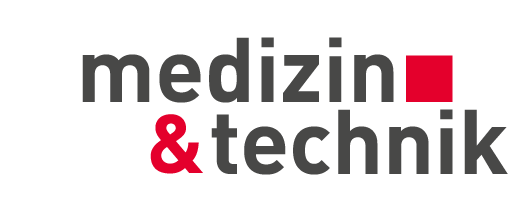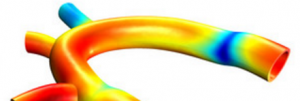In product development, steel or aluminum tools and prototypes made in a 3D printer are well known. But there is also a middle way that makes development quick and comparably cheap even when many modifications are made.
How does a medical technology company make the fastest and cheapest prototypes of injection molded parts—especially when it is clear that the parts will still be further modified here or there in the development process? This was the question facing the Danish company Coloplast, which specializes in products for the treatment of wounds, stomas, continence problems, and urologic disorders. Ultimately Coloplast decided on a mold that was not made of steel or aluminium. Instead it was made from photopolymers on a 3D printer using Polyjet technology.
As a service provider, Diversified Plastics Inc, based in Minneapolis, offers this technology. This tool builder has been making metal tools for prototype manufacturing for its customers for many years—with the usual costs and lead times. But it kept receiving many requests for considerably shorter development times. “At this point we decided to invest in a Polyjet system from Stratasys that would allow us to make tools for prototypes more quickly and more efficiently,” remarks Annette Lund, vice president at Diversified Plastics.
For Coloplast, the time factor played a decisive role in the market launch of a new product. Instead of having to wait six weeks for a metal tool, Coloplast found the perspective of having the plastic mold at hand within five days enticing. This turnaround allowed the development team to test modifications to the product design and improve the structure. “3D printing has clear advantages when it comes to costs too,” emphasizes Joni Davis, sales engineer at Diversified Plastics. “While you would have to pay about USD 13,000 for a mold made of steel, the costs for a plastic mold were only around USD 1,500.”
This example shows that Diversified Plastics made the right choice in investing in an Objet260 Connex 3D printer. These systems are developed and manufactured by Stratasys Ltd., which claims to be one of the world market leaders in the area of 3D printing and additive manufacturing.
The process is expected to bring major advantages especially to manufacturers of medical devices. “We found out, however, that so far the process has been used relatively little in the development of medical devices,” says Nadav Sella, senior manager in the manufacturing tools division at Stratasys. This situation is set to change, and one step heading in that direction is the collaboration between Stratasys and the US company Worrell Design. According to Sella, Worrell has the experience and infrastructure to integrate injection molding and 3D printing into product development. The two companies want to appear at international trade fairs and even hold workshops to make their methods and the possibilities they offer more widely known in the medical technology industry.
“We were recently approached by MedTG, a start-up company for medical devices,” explains CEO Kai Worrell. MedTG wanted to develop a needle-free blood collection system for two bloodstreams to avoid the use of multiple punctures whenever possible. “Using an injection mold made on a 3D printer for the prototypes allowed us to lower costs by about 70 percent compared to traditional tools and to reduce the amount of time needed by about 95 percent.” Given these advantages, Polyjet technology has been firmly integrated into the product development cycle. Canto Ing. GmbH based in Lüdenscheid, Germany, is another example of a tool builder that offers these services.
As Nadav Sella reports, there are many applications in the medical industry that would have much to gain from rapid prototype manufacturing. Since the material Digital ABS has become available for the Objet Connex systems, 3D printing has been able to make stable and resilient molds with high thermal resistance, “and that is ideal for the said applications.” Tests conducted by Nypro Healthcare, out of Ireland, which makes plastic precision products for the healthcare and packaging industry, verified the stability of the molds and the quality of the prototypes. op
Additional information about the company Stratasys: www.stratasys.com about the service provider Canto Ing.: www.prototypen.de
Plastic Mold
The Polyjet technology developed by Stratasys is a 3D printing process used to create three-dimensional objects. It requires the use of a liquid photopolymer applied in layers in the requested arrangement and cured by means of UV light. Polyjet technology can even be used to make molds for injection molding that can be used to create prototypes from the end material. Polyjet injection molds are not designed to replace soft or hard tooling for medium-sized or large production quantities, however. According to Stratasys, these molds form the bridge between tools for soft tooling and 3D printed prototypes, which gives the molds their own niche.
The injection molds are made from a material called Digital ABS and can be made in layers up to 30 µm thick with an accuracy of up to 0.1 mm. Other solid Polyjet materials such as RGD720 and the Vero family can also be used for injection molds. For components that have complex geometries, however, molds made from these materials have a shorter lifespan than those made from Digital ABS.
Parts made from materials that have a processing temperature below 300 °C and have good flow properties can be injected into the molds. Stratasys includes in its list of materials polyethylene (PE), polypropylene (PP), polystyrene (PS), acrylonitrile-butadiene-styrene (ABS), thermoplastic elastomers (TPE), polyamide (PA), polyoxymethylene or acetal (POM), polycarbonate ABS mixture (PC-ABS), and glass fiber-reinforced polypropylene or resin.
A few things need to be kept in mind with Polyjet molds. They require longer cooling times because they have only low thermal conductivity. For example, a cooling time of 30 s is recommended for small or thin components measuring up to 1 mm thick. The plastic resin used for the mold will affect the time needed for cooling as well.
Teilen:







